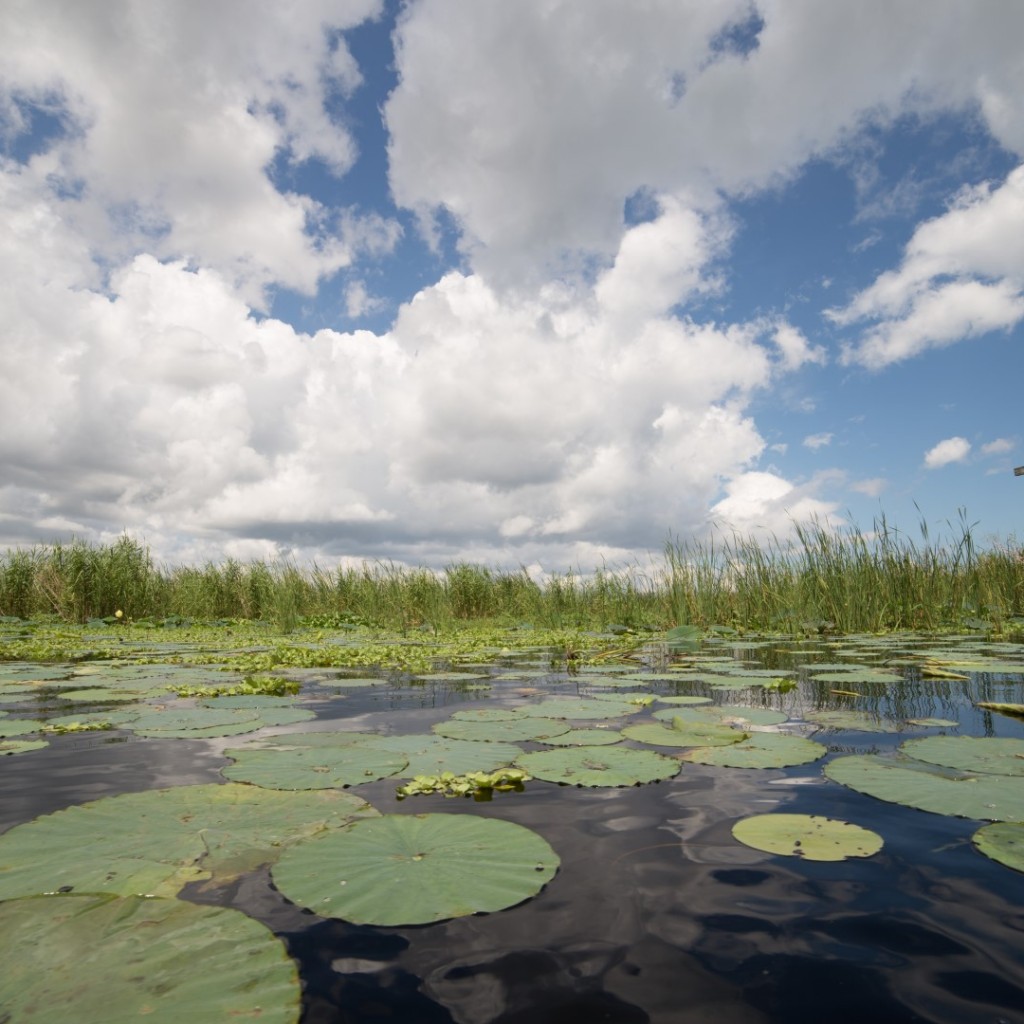
Scientists working for the South Florida Water Management District presented findings Thursday pointing to inflows north of Lake Okeechobee as the source of nutrients causing recent algae blooms in the lake.
The results show runoff from north of the lake, due to high rain levels and the warm temperature, was the principal cause of the bloom.
The nutrient-rich inflows from Taylor Creek, Kissimmee River, Nubbin Slough, Indian Prairie and Fisheating Creek had chlorophyll levels above the 40 micrograms per liter threshold which indicate algae, with one station in the northern section of the lake measuring in at over 100 micrograms per liter.
Everglades Agricultural Area Farmers, a group representing mainly sugar farmers south of the lake, saw the report as vindication for what they have been telling state lawmakers all along: sugar isn’t the problem, and southern storage isn’t the solution.
“We are seeing the result of what we warned about during session: environmental special interest groups and Senate leaders spent all of their time and energy pushing a myopic plan focused solely on southern storage to put a band aid on a symptom rather than addressing the problem at the source,” EAA spokeswoman Danielle Alvarez said. “And now we’re seeing that algae in the lake remains a problem in a year when water volume and estuary discharges aren’t a problem.”
One slide in the presentation even shows a clear north-to-south progression in algal blooms, with pockets starting to form along the northern coast of Lake Okeechobee June 30, and spreading southward through the end of July.
Water storage south of Lake Okeechobee was one of Senate President Joe Negron’s major legislative priorities in 2017, and he managed to push through the controversial $1.5 billion plan in the closing days of Session.
The legislature didn’t manage to pass any bills focusing on other causes of algal blooms, such as a plan backed by Gov. Rick Scott that would have put $40 million toward converting septic tanks to sewer along the Indian River Lagoon and Caloosahatchee River.
South Florida farmers have cut their phosphorus levels by 70 percent in the past year, and EAA said it’s time for lawmakers to do their part by tackling the problem at the source with a northern water storage and treatment plan.



5 comments
Hugh Mcgillivray
August 6, 2017 at 8:35 am
First I wouldn’t believe this scientist working for SFWMD. All who have disagreed with Scott and his agenda have been replaced. This year is also an anomaly in that the water levels in the lake are very low. 13.08′ yesterday. The Kissimmee river area has received plenty of rain and is flowing into Lake O so yes in this odd year it is making 90% of the flow into the Lake and yes it is bringing most of the N and P into the lake – this year so far. This article didn’t mention the legacy pollution that sits in Lake O, it doesn’t have a naturally high phosphorous level. While at the same time the Everglades north of the alley is flooded. The ACoE’s manipulations are still being destructive. So yes, this year, pollution from the Kissimmee is causing some of the bloom in Lake O but all the conditions are there for a bloom even if there was no water coming from the Kissimmee . There aren’t any blooms on the coasts because no fresh water is flowing to them. Lake Okeechobee is still a polluted mess, there are storage areas being built to the north, the Kissimmee is undergoing restoration and now we’re going to build storage areas to the south with the intention of returning to a more natural flow. Things are moving in a positive direction.
Kevin
August 6, 2017 at 1:10 pm
Yeah that back pumping to the lake from the suger fields did nothing 👍. They conveniently forgot to mention that they back pumped during our last high water event in the conservation areas in this article. Just saying
Mike conner
August 7, 2017 at 9:32 am
Sugar has been forced by numerous court orders over the years, which the industry fought relentlessly, to address over-fertilization and has maybe and begrudgingly improved the runoff nutrient numbers. They have utilized publicly owned and financed STAs in part of course, and still show zero desire to be part of the storage plan south of Lake O. That industry’s decades of backpumping have done great damage to the Lake, and to,the estuaries that are used to drain the Lake and keep the EAA dry during wet times. It really is no secret folks.
Blair Wickstrom
August 7, 2017 at 1:38 pm
Excessive nitrogen and phosphorous, runoff from ag, north of the lake helped provide nutrients which led to the existing algae bloom in the lake, but so did backpumping heavily nutrified water from the EAA south of the lake. Plus, sending water west from the St. Lucie canal didn’t help.
And the point that you failed to bring up, the reason for sending the heavily polluted water into the lake in the first place, is to have water, if needed, for Big Sugar. If we didn’t have 400K+ of sugar fields dependent on Lake O for water we’d let the lake draw down to a natural level, with no prospects of having to send toxic water to the coastal estuaries in the event of a few weeks of tropical weather.
Big Sugar is the reason for the toxic water in the lake, if not directly, but indirectly.
Daniel Mcgarity
August 7, 2017 at 7:19 pm
Outlaw phosphorus?
Comments are closed.